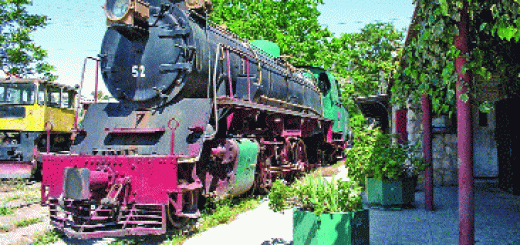Chained Born as SLAVES – Khadiza Binte Mostafiz
 All men are born free. All men are equal. That is what some of us believe, but the history and still the present disagree. Not all men were born as humans, some were born as “SLAVES”. The dark history of slavery still brings nightmares to those who try to imagine that the texts written in pages after pages with dark black ink was once real and people were brutally treated and were called “SLAVES” not “HUMANS”.
All men are born free. All men are equal. That is what some of us believe, but the history and still the present disagree. Not all men were born as humans, some were born as “SLAVES”. The dark history of slavery still brings nightmares to those who try to imagine that the texts written in pages after pages with dark black ink was once real and people were brutally treated and were called “SLAVES” not “HUMANS”.
The history of slavey is older than history itself .Slavery, condition in which one human being was owned by another. A slave was considered by law as property and was deprived of most of the rights ordinarily held by free persons. They were sold and bought and used like lifeless things. And most of their stories were never heard as if they never existed at all.
 Recently, an Albama ship wreck revealed the untold story of the international slave trade. It depicts that even after slavery was made outlaw, slave trade still took place. And even today in 21st century slavery exists in secret in many parts of the world including the west, middle east and Africa region.
Recently, an Albama ship wreck revealed the untold story of the international slave trade. It depicts that even after slavery was made outlaw, slave trade still took place. And even today in 21st century slavery exists in secret in many parts of the world including the west, middle east and Africa region.
All about slave trade:
Slavery has occurred in many forms throughout the world but one institution stands out for its global scale and lasting legacy. The Atlantic Slave Trade, occurring from the late 1400s till mid 1800s century spanning three continents. Forcibly brought 10 million Africans to the Americas. A journey that almost 2 million of them wouldn’t survive. The impact it would leave not only affected this slaves and their descendants, but the economies and histories of the large parts of the world.
 History behind the slave trade
History behind the slave trade
There had been centuries of contact between Europe and Africa via the Mediterranean. But the Atlantic slave trade began in the late 1400s wuth Portuguese colonies in West Africa, and Spanish settlement of the Americas shortly after. The crops grown in the new colonies, sugar cane, tobacco and cotton, were labor intensive, and there were not enough settlers or indentured servants to cultivate all the new land. American Natives were enslaved, but many died from new diseases, while others effectively resisted. And so to meet the massive demand for labor, the Europeans looked to Africans.
 Africans as SLAVES
Africans as SLAVES
African slavery had existed for centuries in various forms. Some slaves were indentured servants, with a limited term and the chance to buy one’s freedom. Others were more like European serfs. In some society slaves could be part of the master’s family, own land, and even rise to positions of power.
But when white captains came offering manufactured goods, weapons, and rum for slaves, African kings and merchants had little reason to hesitate. They viewed the people they sold not as fellow Africans but criminals, debtors, or prisoners of war from rival tribes. By selling them, kings enriched their own realms, and strengthen them against neighboring enemies. African kingdoms prospered from the slave trade, but meeting the European’s massive demand created intense competition. Slavery replaced other criminal sentences, and capturing slaves became a motivation for war rather than its result. To defend themselves from slave raids, neighboring kingdoms needed European firearms, which they also bought with slaves. The slave trade had become an arms race, altering societies and economics across the continent.
Life as a Slave
As for the slaves themselves, they faced unimaginable brutality. After being marched to slave forts on the coast, slaves were stripped of their clothing, shaved to prevent lice, and branded, they were loaded onto ships bound for the Americas. About 20% of them would never see land again. Most captains of the day were tight packers, cramming as many men as possible below deck, creating hellish conditions when combined with heat and lack of ventilation below deck. Disease were rampant. While the lack of sanitation caused many to die of disease and others were thrown overboard for being sick, or as discipline. Disobedient slaves were tortured and beaten, usually whipped with the specially cruel cat of nine tails, a tool designed to inflict maximum pain. Slaves who refused to eat their typical meal of rice and beans were forced to do so, sometimes with a speculum oris, a medieval tool used to pry open unwilling mouths.
Women, while usually left unshackled, were raped and sexually abused by members of the crew, sometimes arriving in the new world carrying the children of their attackers.
 The captains ensured their profits by cutting off slave’s ears as proof of purchase. Some captains took matters into their own hands. Many inland Africans had never seen whites before, and thought them to be cannibals, constantly taking people away and returning for more. Afraid of being eaten, or just to avoid further suffering, they committed suicide or starved themselves, believing that in death, their souls would return home. Those who survived were completely dehumanized, treated as mere cargo. Women and children were kept above deck and abused by the crew, while the men were made to perform dances in order to keep them exercised and curb rebellion.
The captains ensured their profits by cutting off slave’s ears as proof of purchase. Some captains took matters into their own hands. Many inland Africans had never seen whites before, and thought them to be cannibals, constantly taking people away and returning for more. Afraid of being eaten, or just to avoid further suffering, they committed suicide or starved themselves, believing that in death, their souls would return home. Those who survived were completely dehumanized, treated as mere cargo. Women and children were kept above deck and abused by the crew, while the men were made to perform dances in order to keep them exercised and curb rebellion.
Modern Slavery
Even in 21st century, human trafficking is one of the fastest growing criminal industries representing over 30 billion dollars in illegal trade per year . At any given time the united nations estimates more than 2.4 million people hailing from 136 different countries are being trafficked around the world. Many end up in the sex trade, some end up in forced labor, essentially modern slavery.
We hope for nothing more than a peaceful world where the word “slavery” doesn’t exist and all are treated equally as “humans”.
Source : Internet












Recent Comments